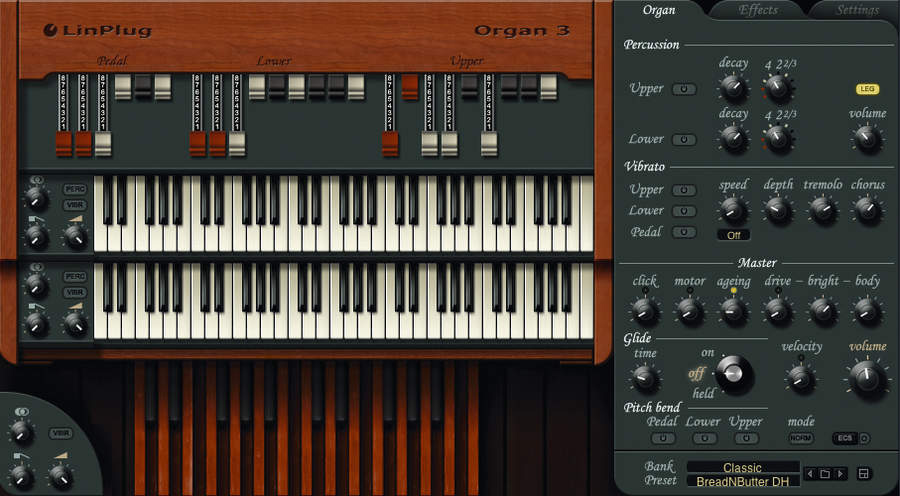MusicRadar Verdict
LinPlug's organ has blossomed into an instrument that will appeal to programmers and players alike. Those who buy it will find themselves using it frequently.
Pros
- +
Loads of new features. Authentic sound. Easy to program. A varied range of presets.
Cons
- -
More presets would be nice. More expensive than before.
MusicRadar's got your back
When Steinberg introduced the plug-in instrument concept back in 1999, we didn't expect it to trigger the release of a glut of tonewheel organ emulations.
But that's exactly what happened: Native Instruments launched B4 the following year, LinPlug released daOrgan in 2002, and USB gave us Charlie in 2004.
What's more, we've been led to believe that all of these products have been strong sellers.
Organ 3 is the latest version of LinPlug's instrument - thankfully, the 'da' prefix now seems to have been dropped - and it's a much more serious, comprehensive proposition than its predecessor.
Like its rivals, it takes Hammond's legendary B3 as its primary source of inspiration, though you also have access to other tonewheel sets (notably from classic Farfisa and Vox organs).
New features
Everywhere you look in Organ 3 you find new features. There are now three playable 'manuals' - Upper, Lower and Pedal - and each of these has not only its own set of drawbars but also its own ADSR envelope.
Dedicated Percussion and Vibrato sections have also been installed (both of which are essential to getting that classic Hammond sound) and two effects units are now in place.
Each of these can host a reverb, delay, chorus, gater, lo-fi or rotary processor, the last of which emulates the sound of the classic Leslie speaker.
Countless other tweaks have been made too and, thanks to an easily navigable interface (tabs open up pages for the organ, effects and settings controls), Organ 3's considerable power is easy to harness.
Most importantly, LinPlug have created an instrument that's a blast to play, sounds terrific and is far more versatile than you might at first imagine.
The 100+ supplied presets ably demonstrate Organ 3's capabilities - you get everything from throbbing and mellow Hammond sounds to basses, effects and synth-like patches - and the plug-in's intuitive layout actively encourages you to create your own.
Organ virgins will have to spend a bit of time working out how moving the drawbars affects the overall tone, but when considered as a whole, this is far from a complex bit of software.
It might be much more expensive than the first daOrgan (which was originally offered for a trifling $29), but this price rise simply reflects the fact that LinPlug's organ has matured to such an extent that it's now a serious alternative to NI's B4 II.
If all you want are presets, check out USB's Retro Organs, but for those who crave superior control and flexibility, Organ 3 is an excellent choice.
Computer Music magazine is the world’s best selling publication dedicated solely to making great music with your Mac or PC computer. Each issue it brings its lucky readers the best in cutting-edge tutorials, need-to-know, expert software reviews and even all the tools you actually need to make great music today, courtesy of our legendary CM Plugin Suite.

“This is a beautiful, well-executed Les Paul, and that’s the sort of guitar you tend to hold onto for life. That’s as sound an investment as there is”: Gibson Les Paul Standard ‘50s Double Trouble review

“We were able to fire up a bass sound that was indistinguishable from the flavour of New Order’s Blue Monday in seconds”: EastWest Sounds Iconic review

“How long did it take me to get over it? Oh, quite a while”: Brian May on the “supreme injustice” of Roger Taylor’s Queen B-side "making as much money as Bohemian Rhapsody"









